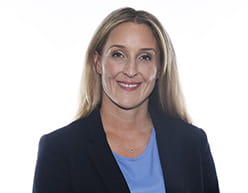Whilst taking an internal examination of your own business practices is important to meet sustainable objectives, true success cannot be accomplished without considering the indirect emissions of such business activities, widely known as 'Scope 3 emissions'.
Scope 3 emissions include not only emissions arising from business travel, employee commuting and waste disposal, but also, importantly, emissions arising from the supply chain. Specific examples of supply chain emissions arising are through:
- the purchase of goods and services; and
- transportation and distribution (up and downstream).
According to the CDP 2020 Global Supply Chain Report, supply chain emissions are, on average, 11.4 times higher than operational emissions, which equates to approximately 92% of an organization's total greenhouse gas (GHG) emissions. Therefore, Scope 3 emissions are arguably the most important aspect of an organisation's green endeavours which should be addressed to make a real environmental impact.
The Chancery Lane Project (TCLP) has identified the supply chain to be a real opportunity to drive change, and in our opinion rightly so. To date 26 separate draft clauses have been provided across a variety of sectors to tackle this problem from a contractual perspective. Commercial lawyers are in a unique position to influence practical outcomes and assist clients from the outset of any relationship, using contracts to provide parameters, incentives and punitive measures.
Some supply chain clauses which TCLP has produced include:
- Matilda's annex – cascading GHG reporting and reduction obligations throughout the supply chain;
- Viola's clause – requiring the supplier/ contractor to procure energy from renewable sources; and
- Agatha or Annie's clauses – allowing a right of termination for a customer so that they can pivot to a greener supplier to meet their sustainability, climate or other environmental objectives.
These provisions primarily focus on a supplier's reporting obligations as well as the consequences arising for non-compliance.
The Trowers commercial team has found that currently the most effective use of the TCLP clauses is as a starting point, using them to create 'lighter green' provisions. In our experience this approach meets the growing desire and need of clients to be environmentally friendly and disseminate sustainability requirements throughout the supply chain whilst ensuring that, as these clauses bring a new set of obligations, they are realistic in a commercial context and accepted by other parties.
For example, termination rights arising from a failure to comply with GHG reporting can be difficult currently to negotiate, but obligations to report on environmental matters and work collaboratively to reduce environmental impact are generally easier to agree. We anticipate that over time, as environmental obligations become a normal part of contracts, these 'lighter green' provisions will become 'darker'.
Clients are increasingly conscious of their environmental impact, not least due to consumer and employee demand, and commercial contracts must reflect this reality without compromising the key principles of a business relationship. Encouraging clients to begin with small 'green' contractual successes, will encourage the reduction of Scope 3 emissions, in addition to assisting private sector clients to meet the growing requirements set by the public sector.
A prime example highlighted by TCLP is Vodafone using TCLP provisions and blending them with its existing environmental compliance provisions in its supplier agreements. We believe this approach to be effective. Creating flexible options is the key to unlocking supply chain receptibility to Scope 3 emission reducing clauses and the use of these clauses will, in our view, increase over time as they start to become industry standard.
The use of contracts to meet climate objectives is likely to increase going forward, and any business failing to look at its own supply chain as a source of emissions will find itself at a disadvantage when pitching for work. This is particularly the case when a business has clients in the public sector.
Next in the series we look at key considerations when procuring public contracts.

